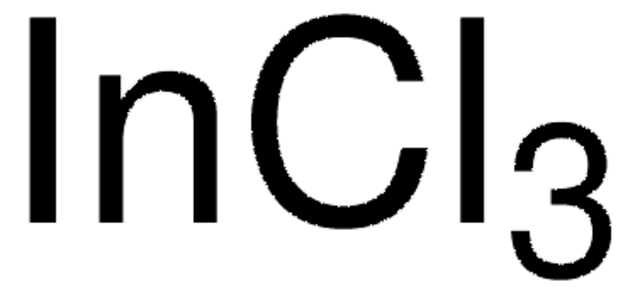916013
Cloruro de litio
anhydrous, 99.95% trace metals basis
Sinónimos:
Lithium monochloride, NSC 327172
About This Item
Productos recomendados
grado
anhydrous
Nivel de calidad
Ensayo
99.95% trace metals basis
Formulario
crystals
características de los productos alternativos más sostenibles
Design for Energy Efficiency
Learn more about the Principles of Green Chemistry.
sustainability
Greener Alternative Product
mp
605 °C (lit.)
categoría alternativa más sostenible
cadena SMILES
[Li+].[Cl-]
InChI
1S/ClH.Li/h1H;/q;+1/p-1
Clave InChI
KWGKDLIKAYFUFQ-UHFFFAOYSA-M
¿Está buscando productos similares? Visita Guía de comparación de productos
Descripción general
We are committed to bringing you Greener Alternative Products, which adhere to one or more of The 12 Principles of Greener Chemistry. This product has been enhanced for energy efficiency. Click here for more information.
Aplicación
Características y beneficios
- The anhydrous form of lithium chloride guarantees the absence of moisture, essential for preserving battery efficiency and averting undesired side reactions. Its anhydrous nature enhances reactivity, rendering it suitable for moisture-sensitive processes.
- The 99.95% purity minimizes contamination from trace metals, ensuring suitability for applications sensitive to even minute impurities.
- It contains less than 0.6% water to develop a more efficient battery component.
Palabra de señalización
Warning
Frases de peligro
Consejos de prudencia
Clasificaciones de peligro
Acute Tox. 4 Oral - Eye Irrit. 2 - Skin Irrit. 2
Código de clase de almacenamiento
13 - Non Combustible Solids
Clase de riesgo para el agua (WGK)
WGK 1
Punto de inflamabilidad (°F)
Not applicable
Punto de inflamabilidad (°C)
Not applicable
Elija entre una de las versiones más recientes:
Certificados de análisis (COA)
¿No ve la versión correcta?
Si necesita una versión concreta, puede buscar un certificado específico por el número de lote.
¿Ya tiene este producto?
Encuentre la documentación para los productos que ha comprado recientemente en la Biblioteca de documentos.
Nuestro equipo de científicos tiene experiencia en todas las áreas de investigación: Ciencias de la vida, Ciencia de los materiales, Síntesis química, Cromatografía, Analítica y muchas otras.
Póngase en contacto con el Servicio técnico




